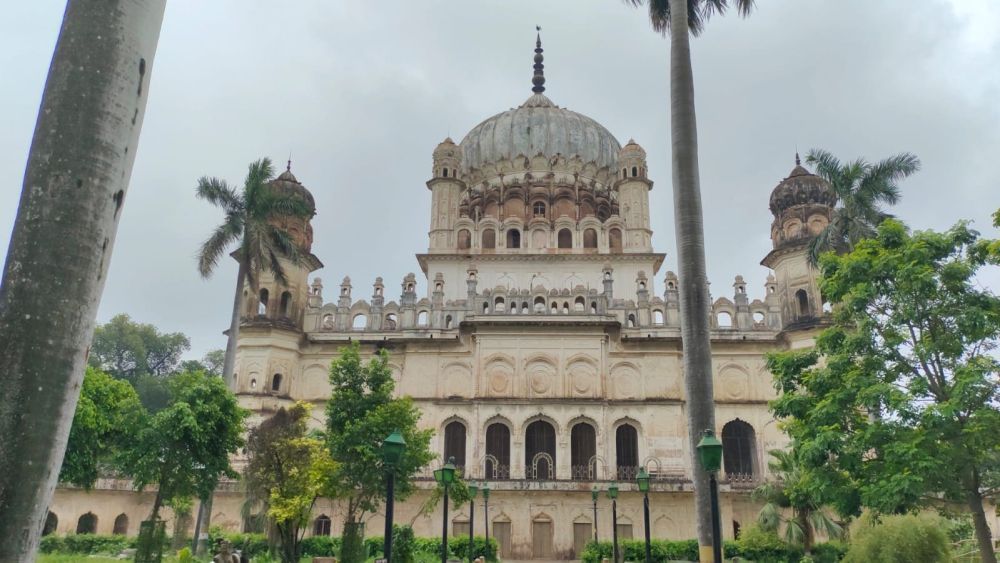

The city of Ayodhya in Uttar Pradesh, India, is steeped in historical and mythological significance. Among its architectural marvels is the Bahu Begum ka Maqbara, an 18th-century mausoleum, which stands as a testament to the region's rich Islamic heritage and cultural diversity.
The Maqbara, also known as the Tomb of Bahu Begum, was built in 1816 and is the resting place of Unmatuzzohra Bano, the wife of Nawab Shuja-ud-Daula. The Nawab was the ruler of the region and had this mausoleum constructed in the memory of his beloved wife, Bahu Begum. Upon its completion, the monument became synonymous with the grandeur and exquisite Mughal architecture of that era. Its significance lies not only in its historical context but also in the harmonious blend of Islamic and Indian architectural styles.
Bahu Begum ka Maqbara features impressive characteristics such as a high central chamber, large bulbous domes, and fine minarets. The structure's façade is decorated with intricate carvings, calligraphy, and floral patterns, showcasing the artistic prowess of the craftsmen of the period. The mausoleum is surrounded by a well-maintained garden, which further enhances its aesthetic appeal and offers a tranquil haven for visitors.
Tourism in Ayodhya has traditionally been centered around the city's religious history, with the Bahu Begum ka Maqbara offering an alternate narrative to the deeply spiritual context of the area. Over the years, the mausoleum has attracted tourists interested in the architectural heritage and the region's Nawabi culture. The site is easily accessible by local transport from the heart of Ayodhya, and efforts to promote regional tourism have increased its visibility to travelers.
With the rise of heritage and cultural tourism, Bahu Begum ka Maqbara has seen an influx of visitors looking to explore beyond the well-trodden paths of pilgrimage. The latest tourism trends indicate a greater interest in immersing oneself in the local history and culture. To facilitate this, the Uttar Pradesh government has taken initiatives to provide better facilities and to preserve historical sites such as the Bahu Begum ka Maqbara for future generations.
Visitors to the Bahu Begum ka Maqbara can explore the monument throughout the year. However, the cooler months from October to March are the most conducive for a visit, offering pleasant weather. While there is no entry fee, it is advisable to go during daylight hours to fully appreciate the intricacy of the site's architecture and to capture the mausoleum's beauty in photographs.
In conclusion, the Bahu Begum ka Maqbara is a gem in Ayodhya's crown, reflecting the city's layered history and offering a glimpse into the craftsmanship and artistry of a bygone era. As tourism trends evolve, this mausoleum continues to be a focal point of interest for both domestic and international visitors keen to discover the rich tapestry of Indian heritage.